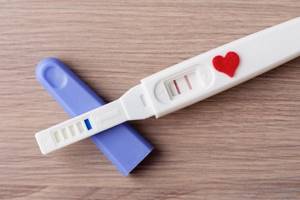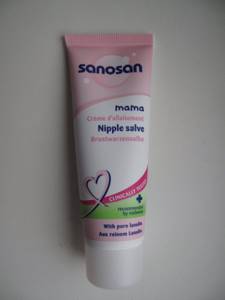The origin of life is the greatest miracle on Earth, and the bearer of this miracle is a woman. How often does an expectant mother think about what the baby will be like, dreaming about his first steps and smiles.
Unfortunately, circumstances may not be so favorable, and a woman is forced to think about how to maintain an early pregnancy. It is necessary to understand that the level of modern medicine makes it possible to save even hopeless cases, but only when the woman herself takes all measures for this salvation.
Source of risk
Before being puzzled by the question of how to maintain an early pregnancy, it is necessary to determine why a tragedy may occur. Doctors classify causative factors as follows:
- The threat of spontaneous abortion is the main reason for miscarriage before 20 weeks.
- A Rh conflict occurs when the mother has a negative Rh factor and the embryo has a positive Rh factor. The body perceives it as a foreign body.
- Multiple pregnancy.
- Hormonal imbalances. Insufficient production of these substances makes successful pregnancy almost impossible.
- Artificial insemination. An embryo is implanted into the female body. Even after hormonal preparation, the risk of miscarriage remains, because the uterus pushes out the fertilized egg.
- Unsuccessful previous pregnancy experience (habitual miscarriages, frozen pregnancy).
A reliable clinical picture emerges after the examination. Based on the diagnostic results, further treatment tactics are developed. All manipulations can be carried out at home or in a hospital setting, depending on the severity of the patient’s condition.
How to get used to the idea of pregnancy
In psychology, pregnancy is always considered a critical, turning point in the life of any woman. It would seem that expecting a baby is a completely magical, unique time for the expectant mother, especially if the pregnancy was desired by both parents, and one can only talk about some problems or crisis if the baby was not initially planned. In fact, pregnancy is a personal crisis for any woman and under any circumstances, because it completely changes her consciousness and relationship with the outside world. And rejection of her new condition can provoke painful experiences in the expectant mother: fears, anxieties, resentments...
Many expectant mothers have to overcome not only their fears and worries, but also face family contradictions, as well as the values and views of modern society, which is more focused on career and social success than on having children. Therefore, it often happens that women with a high social and intellectual level, who have been planning and preparing for pregnancy for a long time, subsequently find it more difficult to accept themselves as pregnant. It is not easy for them to adapt to a new life, since they compare the value of their independence and success with the meaning of childbearing.
“I’m pregnant, all my plans have collapsed”
I have been married for two years and am now pregnant (2nd month). Not in a good mood. It seems that my husband and I wanted a baby, but when I saw that the pregnancy test was positive, I then cried for two hours. I had the feeling that all my plans – work plans, vacation pay – had collapsed. Then there’s this toxicosis – tolerable, but disgusting. Now I know how to alleviate my physical condition, but, to be honest, there is no particular joy. I didn’t think that I would have such depression during pregnancy... Is this even normal?
Inna, 29 years old
Psychologist's opinion

The psyche of a woman who has learned that a new life is being born in her cannot be restructured instantly; awareness of pregnancy and its acceptance do not turn on like a light bulb in an instant. The development of feelings in an expectant mother goes through several stages.
First stage: immediate reaction. Lasts from a couple of minutes to several hours. When a woman first finds out about pregnancy, she can be overwhelmed by completely unpredictable feelings. Of course, in most cases, with an expected pregnancy, the first emotions of the expectant mother are positively colored: she can experience feelings from joy to euphoria. If the pregnancy is unexpected, the range of feelings can expand from despair to joy. After all, a woman with a developed maternal instinct, who has a successful relationship with her husband and lives in fairly good social conditions, may not be expecting a baby at the moment, but will be delighted at the possibility of his appearance. On the other hand, there are cases when a woman is preparing for conception, planning a child, but the news of pregnancy at the first moment causes her fear and confusion. This reaction can be explained by the personal characteristics of the expectant mother: for example, with increased anxiety, fear is a common reaction to new circumstances, even joyful ones. In addition, planning a pregnancy does not mean that the woman herself is internally ready to become a mother. It is possible that, when deciding to give birth to a baby, a woman was only following her husband’s wishes, submitting to family pressure or social stereotypes.
Stage two: awareness and acceptance. It lasts for several days and several weeks. This time is necessary for the woman’s first emotions to reduce their intensity and severity, for the expectant mother to receive evidence of her special position, to begin to reason and build her life in a new way. At this stage, many women, especially those whose pregnancy was suffered and long-awaited, and those for whom it was a complete surprise, go through a journey of disbelief and a feeling of the unreality of what is happening (“This simply cannot happen!”, “It cannot happen to me.” this will happen!”, “I don’t believe it worked this time!”) until the realization of conception as a fait accompli. Often, women who did not plan to have a child, at this stage subconsciously hope that everything will be resolved “by itself” (for example, a spontaneous termination of pregnancy will occur), and only after the pregnancy becomes obvious to them, they accept themselves in new quality.
Third stage: inconsistency. This period is characterized by an ambivalent attitude towards pregnancy. Expectant mothers, having experienced the first emotional outburst and recognizing the existence of life within themselves, are faced with the emergence of new feelings. A woman can simultaneously experience joy, optimism, hope and wary anticipation, fear, and sadness. Frequent feelings are confusion, anxiety, and lack of self-confidence, because a woman begins to ask herself many questions about her future life and look for answers to them, analyze the situation. The consciousness of the expectant mother is being restructured, which causes natural concerns. In the case of an unplanned pregnancy, conflicting feelings can torment a woman longer and more intensely, because she has to go through more adaptation moments.
Stage four: stabilization. At this final stage, the woman begins to fully adapt to her situation and rebuilds her lifestyle in accordance with it. During this period, the expectant mother develops new habits, eating habits, and a different attitude towards herself and others. A woman who has gone through all the stages and accepted her pregnancy, regardless of whether it was planned or not, feels inner positive peace, “quiet” joy.
It's all emotions!

The emotional state of the expectant mother largely depends on the woman’s personal characteristics, her worldview and mental characteristics. For example, anxiety as a personal quality can cause a pregnant woman to have many fears about the future and uncertainty about her decision to become a mother, which provokes a prolongation of the period of accepting her position. On the other hand, natural optimism and stress resistance often help a woman quickly adapt to pregnancy, even if it turns out to be a surprise.
In addition, the attitude towards pregnancy largely depends on the totality of motives for motherhood, some of which may not be recognized by the woman. They can be both constructive (the desire to give life to another person, to find continuation of marital love in a child, to give one’s love and care, etc.) and destructive (for example, to desire a child in order to avoid loneliness, to maintain a relationship with a spouse or to meet social expectations). In other words, even a desired and planned pregnancy, but one that arose with destructive motivation, makes it difficult for the expectant mother to form a positive attitude towards her condition and the child, and delays the period of adaptation and acceptance of pregnancy.
Threat of spontaneous abortion
The question of how to maintain an early pregnancy is relevant for many families. Doctors explain that an early miscarriage is usually called a miscarriage that develops before 12 weeks. They note that about ¼ of all incidents occur in the first few days after actual conception, when the woman herself does not know about her situation.

Statistics say that the first abortion occurs in every tenth case, and a secondary abortion occurs twice as often. The cause of spontaneous miscarriage can be uterine hypertonicity or rejection of the fertilized egg.
How to maintain an early pregnancy when there is a threat of miscarriage? Doctors' recommendations boil down to the following:
- Proper nutrition (detailed instructions will be given below).
- A woman should be protected from stress.
- It is better to refrain from unfavorable working conditions and any overexertion. Strict bed rest is required.
- Unquestioning compliance with medical prescriptions. Usually these are magnesium preparations, “No-shpa”, “Papaverine”; according to indications, hormonal drugs “Utrozhestan”, “Duphaston” are prescribed.
- If necessary, hospitalization is carried out.
"There can be no mistake"
Memories of mothers who experienced the loss of a child (from the forum of the Light in Hands charity foundation):
“After 12 weeks, no one will terminate a pregnancy without a special consultation of doctors and a clearly established diagnosis. Needless to say, none of the doctors talked to us normally, no one explained the clear sequence of actions, timing, risks, what “termination of pregnancy” even means, etc.?”
Genetic abnormalities are detected during pregnancy screenings; there are three of them in total. Screening is a set of studies that allows you to obtain the most complete information about the health of the fetus. If during the examination the ultrasound diagnostic doctor has doubts, the patient is referred to the Medical Genetics Center,” said Tatyana Elizarieva, chief physician of the Medical Genetics Center.
“It is important to let the woman understand what she is facing and offer all possible options. If these are chromosomal disorders and intellectual deficits in the fetus, for example, Down syndrome, we explain that the child can be born and, in the absence of any physical defects, will even be able to develop - sit, perhaps write and draw, communicate a little. But we also make it clear that such a child will never be able to live independently, especially after the departure of parents or other guardians, such a child requires quite large financial expenses, which not every family is ready for, such a child will always require more attention and strength, and for His parents will have to fight every step in his development. All this is necessary so that families understand what they are getting into in both cases. In any situation, we as doctors are obliged to respect their choice,” emphasizes Tatyana Elizarieva.
After a medical consultation, any couple has time to think and make an informed decision. Doctors note that today the equipment and technology of the medical genetic center excludes even the very possibility of making an incorrect diagnosis. In addition, in each case, the test results are processed by several doctors, each of whom gives an opinion and recommendations on pregnancy.
How to maintain early pregnancy at home?
If after examination no serious threat is detected, the doctor prescribes a set of procedures that can be implemented at home. Typically, help consists of pharmacological support for the patient, strict bed rest and complete emotional rest.
Among the groups of medications, hormones, drugs that relax smooth muscles, vitamins and minerals are prescribed. How to maintain early pregnancy? The answer is simple. It is necessary to strictly follow the doctor's recommendations, especially if therapy is carried out at home.
Actions of doctors in case of postmaturity.
First of all, doctors will carry out various procedures that will show the age of the fetus, its condition, the condition of the placenta, the composition and volume of amniotic fluid, and the readiness of the uterus for labor. If all indicators are normal, then the child should soon please his parents with his appearance.
If there are no signs, the 42nd week has passed and everything indicates that the fetus is overripe - the doctor begins to stimulate labor by piercing the bladder when the uterus is ripe, or prepares it for expansion with the help of prostaglandins in the form of suppositories or gels, which are placed in the vagina . In addition, oxytocin may be administered, which will induce contractions.
In some cases, the baby gains too much weight in the womb and is unable to pass through the birth canal. Then the doctor performs a caesarean section . Of course, a woman has the right to refuse surgery and stimulation. But not every mother is already able to expect the baby. Moreover, after 41 weeks there is a high risk of death of the child.
What to do after successful artificial insemination?
If the embryo transfer procedure was successful and pregnancy tests showed a positive result, the woman should make every effort to ensure that all previous efforts are not in vain.
How to maintain an early pregnancy after IVF:
- Excluding any emotional shocks and stress, peace should be ensured.
- It is imperative to take all hormonal medications that support the body. If Utrozhestan is prescribed in the form of suppositories, they must be administered deeply to achieve the maximum effect. The tablets of the same name are taken before bedtime, as after them drowsiness and slight dizziness may occur.
- Maintaining a daily routine. An afternoon nap and quiet walks in the fresh air are recommended.
- It is necessary to monitor hormonal levels. If there are surges in estradiol and progesterone in the blood, this can cause abortion. Timely delivery of tests is indicated.
- If a woman is prescribed several medications, it is better to have a special drawer in which the medications will be stored depending on the time they are taken, respectively, in the morning/afternoon/evening. In the midst of your daily hassles, you won’t have to remember which product you took and which you didn’t.
- Jogging, jumping, lifting heavy bags, shaking, and sexual activity are strictly prohibited.
- The patient must coordinate all actions with the attending physician.
Non-developing pregnancy
If a woman has once suffered a similar condition, she automatically falls into the risk group. The more failed pregnancies she had, the more likely she was to experience this problem again. In addition, those who have had an ectopic implantation of the fertilized egg should be wary.
How to maintain an early pregnancy after a frozen pregnancy? The advice of obstetricians and gynecologists boils down to the following:
- The patient should undergo an ultrasound examination to rule out the presence of anatomical abnormalities of the uterus. An ultrasound scan looks at the pelvic organs using an internal probe to provide a detailed picture.
- It is equally important to determine hormonal levels and exclude the possibility of developing diabetes. This is necessary after a woman has suffered repeated frozen pregnancies and conceived again. Depending on the results obtained, doctors prescribe correct treatment and drug support aimed at preserving the fetus.
- Before 18-20 weeks of pregnancy, the length of the cervix and the width of its canal should be determined to determine whether the organ is capable of holding a fertilized egg. When the uterus is unable to attach the fetus, a suture is placed on the cervix, which is removed immediately before delivery.
- To preserve the fertilized egg, the doctor may prescribe the installation of special rings with a bactericidal coating, which also support the cervix and help to successfully carry the baby to term.
- It is important to lie down as often as possible, placing a pillow under your feet. They should be at some elevation.
- Accordingly, all stressful situations and loads should be excluded.

How to prevent pregnancy
Modern medicine, fortunately, can offer you several options for preventing pregnancy, starting with birth control, which is the most reliable method: injections (or pills to prevent pregnancy), IUDs and implants, all the way to sterilization. Of every hundred women who regularly use one of these methods of preventing pregnancy throughout the year, only one to five become pregnant.
Using latex and diaphragm male condoms with spermicide is a less effective method. Out of one hundred women who use these methods for a whole year, twenty can become pregnant.
So is it possible to prevent pregnancy and how to do it?
There are two ways to solve this issue: take medications that are freely sold, or seek medical advice.
How to Prevent Pregnancy Without a Prescription
Some types of products belonging to the birth control series are quite available on the market. The use of this type of contraceptives, as a rule, has no side effects for most people. But there is a category of users in whom this type of pregnancy protection causes an allergic reaction.
Condoms for men
This is the most common way to prevent pregnancy. Condoms can be purchased at almost any retail outlet, regardless of the time of day.
This product is placed on the male genital organ in an erect state, before sexual intercourse begins, and is used only once. Most condoms are made of latex, but some are made of polyurethane. Latex condoms not only prevent pregnancy, but also protect against AIDS and various infectious diseases that are sexually transmitted.
Female condoms
They are made of polyurethane and are also sold in city pharmacies without a doctor’s prescription. How to prevent pregnancy using a female condom? This product is inserted into the vagina before intercourse and is used only once. If it is possible to use a male condom (latex) instead of a female one, use it, it is more effective in preventing pregnancy.
Spermicide
This type of contraceptives also does not require a prescription from a doctor. Spermicide contains a chemical that neutralizes sperm, preventing pregnancy. This drug is available in the form of cream, foam or milk. The drug is applied to the vagina ten minutes before intercourse and is effective for an hour (one dose). You should not shower or bathe for six to eight hours after applying spermicide.
Contact a doctor
There are risks and benefits to taking birth control products, so in some cases it may be worth talking to your doctor to find out which form of contraception is best for you.
Diaphragm
A diaphragm containing spermicide is placed inside the vagina before intercourse begins. This must be done so that it covers the cervix. To prevent pregnancy, the diaphragm needs to remain inside the vagina for at least 6 hours after the end of sexual intercourse, but no more than a day.
How to prevent pregnancy with birth control pills
They have another name - oral contraceptives. There are combined contraceptives (oral) and mini pills.
The former contain the hormones progestin and estrogen, which delay the ovaries from releasing eggs. To prevent pregnancy, the pills must be taken daily.
Mini-pills contain only one hormone, progestin, which prevents sperm from reaching the egg. This type of pill is less effective than combined oral contraceptives.
Now you know how to prevent pregnancy, and you can safely plan your family.
Recipe No. 1 - complex collection
It is necessary to collect several herbs: erect cinquefoil (100 g), stinging nettle (50 g), stalks of seed rye (50 g), marigold inflorescences (50 g), medicinal angelica (30 g). All ingredients are mixed and ground into powder, for which you can use a coffee grinder. The resulting product is brewed with 1 liter of boiling water, covered with a lid and infused for five hours. After the time has expired, the drug is filtered through multi-layer gauze and taken twice a day in a volume of 250 ml.
Recipe No. 2 – to reduce the tone of the uterus
The main components used are: black currant berries (50 g), stinging nettle (50 g), elecampane root (30 g), licorice root (30 g), cinquefoil root (20 g). The herbs are combined and brewed with a liter of hot water, for which a metal container is used. The saucepan is placed on low heat and the broth is simmered for about 15 minutes, after which the mixture is set aside and the product is infused for another 60 minutes. The liquid is filtered and taken five times daily, 100 ml.
Recipe No. 3 – to stop bleeding
Viburnum bark in an amount equal to 50 g is brewed with 500 ml of water. The mixture is brought to a boil over low heat and cooked for no more than 15 minutes. The finished decoction is filtered and taken 100 ml three times a day until the pathological process stops.
Taking into account all these recommendations, you can add to the list of useful purposes. In order to maintain pregnancy, it is important to maintain psychological calm. A decoction of mint or lemon balm, taken a cup a day, can help with this. It is known that milk with 1 tsp promotes sound and restorative sleep. honey, which can also be used while expecting a baby in the early stages.
Skin care after pregnancy: personal experience

For those interested in care during pregnancy, here is the post: 1) Product name:
StriaSan post by Nawa

This cream, like its predecessor (for skin care during pregnancy), was given to me as a gift.

The characteristics are similar to its “brother”: non-sticky, spreads well over the skin, absorbs well; with a barely perceptible, unobtrusive odor, pleasant to me. It moisturizes well, it hardly nourishes, but I don’t need any nutrition in the area of the chest and abdomen where I applied the cream, especially in the summer. Compound:

everything is not simple here: on the box with a Russian-language description of the product they write to apply to the breast “if the mother does not breastfeed”, while on the tube itself it was written “applicable during breastfeeding” (can be used during breastfeeding ), I trusted the English description, because, firstly, I trust the manufacturer more, secondly, I did not apply the product to the nipple itself, as is recommended when using other care products, and thirdly, at first, when I was only breastfeeding, I hardly used it at all.
Unfortunately, I was not able to use it twice a day right away, since the first month and a half after giving birth were very difficult and almost every day I collapsed in the evening; I had neither the energy nor the time for evening beauty rituals, let alone, when there is no time to eat. Perhaps because of this, I was unable to protect myself from stretch marks on my chest: my daughter was constantly hanging on it, and there was no proper care, so new ones were added to the two or three acquired at the end of pregnancy, fortunately, in those places that cannot even be seen in the deepest neckline (I, of course, do not wear Nicki Minaj style outfits). I also cannot notice the effect of tightening the skin: at first my stomach looked as if there was someone else inside, and then it began to look like a deflated balloon. On the other hand, I hoped to return my stomach to its previous appearance not with the help of miracle creams, but with physical activity more serious than walking with a stroller. Overall, the cream is good and pleasant, but it didn’t work a miracle (but that could be my fault), and it would have run out no later than a month and a half later if it had been used regularly. Price:
from 2000 to 2500 rubles, I got it as a gift
Testing period:
in fits and starts from May, twice a day from June 22 to July 24
Rating:
4
2) The product's name:
Sanosan mama Cream for stretch marks during pregnancy – Sanosan Schwangerschafts-creme

Hinged lid (like StriaSan), excess does not leak out of it.

The cream is much denser than StriaSan:

The cream is non-sticky, but is poorly absorbed, and applied to the right places, it doesn’t cause me any particular discomfort, but it irritates me that it stays on my hands, even if I wash them with soap; You can get over it before going to bed, but in the morning it’s downright disgusting. There were no unpleasant sensations during pregnancy, perhaps due to the fact that the skin is drier in the off-season; Now it’s also getting colder, maybe I’ll get rid of these unpleasant sensations. The smell is stronger than StriaSan, but not sweet and not irritating. Compound:

Can be used during breastfeeding
, if you do not apply the product to the nipple itself.
I had three tubes of cream, I started using the first one a few days before giving birth, and I already had stretch marks on my chest. Some of them received after childbirth did not turn white, so promises about reducing their manifestations can be considered unfulfilled. No new ones appeared, but this is hardly the merit of the cream: I had problems with the amount of milk, and by the time I started using the cream, my daughter was already almost completely on the formula, accordingly, there was almost no effect on the breasts. The consumption is the same as that of StriaSan: if that tube with a volume of 150 ml was enough for a month and a half, then this one with a volume of 100 ml is enough for about a month when used twice a day. To be honest, I don’t know exactly why I still bought it: perhaps I want to hope that special products have a better effect, but I don’t want to spend a lot of money. Hopefully now that it's getting colder, its dense texture won't be as nasty. Price:
350-400 rubles
Test period:
from July 25 to today
Rating:
4 minus
3) The product's name:
Sanosan mama Nipple salve - Sanosan Brustwarzensalbe (and not a word of Russian on the packaging!; translation - balm for the skin in the chest area for nipples)

The lid is unscrewed:

Thick, sticky balm, smells strongly of something like a balloon.

Lanolin (if anyone doesn’t know) is a wax of animal origin obtained by boiling sheep’s wool. They also write that it does not require rinsing before feeding. I didn’t wash it off, but I applied it to the nipple of the breast I had just fed so that it could be better absorbed while I was feeding the other breast. I didn’t have any serious problems with my nipples, such as cracks on them, but at first there was discomfort from unusual sensations combined with frequent breastfeeding. Besides, in the first month after giving birth you are afraid of everything, and I was afraid that because of the cracks I would not be able to breastfeed, and yet I found time to care for my nipples in between endless feedings, it would be better to devote time to the entire breast. But when it turned out that there was not enough milk and I started supplementing with formula, after a while I stopped using the balm and did not notice any deterioration. Now I use it as an SOS product; lanolin can be used to speed up the healing of wounds (not open, of course) and burns, as well as for chapped and chapped skin. True, I once applied it to my hands at night, the skin was in excellent condition the next morning, but throughout the night it was not absorbed, although when used for its original purpose it was absorbed much better, but perhaps it was the quantity and/or the breast pads , which absorbed excess. I bought this product as an alternative to Bepanten, whose smell (even in the pre-pregnancy period) infuriated me - it reminds me of something like an unwashed horse’s mane; Now I understand that lanolin does not smell much better, and the consistency and absorbency are worse with approximately the same effect, so I recommend Bepanten, although the balm itself is not bad (and most likely, more economical). Price:
more than 200 rubles per 50 ml
Test period:
first month of lactation several times a day
Rating:
4
4.5 months have passed since giving birth, and as a conclusion I can paraphrase the well-known saying: rely on creams, but don’t make a mistake yourself. I stopped breastfeeding a month and a half ago, and was able to arrange fasting days for myself and run in the yard of the house once or twice a week (plus exercises at home when possible), after which the previous shape began to return much faster. The progress so far is modest, but I am sure that I still have the same amount of time ahead, since my body has been increasing in size for 9 months in a row, and cannot become the same in less time. For now, I'm upset by the dark vertical stripe on my stomach, which, it seems, is not going to disappear anywhere. Is there anyone who would like to share a story about returning to their former shape after childbirth?)
Increase
Proper food is a source of health
If we consider the question of how to maintain an early pregnancy, nutrition plays a key role in it. The entire list of products can be divided into groups II. One promotes successful pregnancy, the second negatively affects the woman’s health and, as a result, the condition of the fetus.

In the first trimester of pregnancy, it is necessary to saturate your diet with foods rich in fiber and vitamins, the main sources of which are fresh fruits and vegetables. You can eat carrots, beets, apples, pears, cucumbers, zucchini, eggplants, bananas, tomatoes. Lean boiled meat and white fish, porridge are welcome. Do not get carried away with fatty foods, dishes with flavor enhancers and other chemical additives. How to maintain early pregnancy after miscarriage and other failures? We should not forget about the drinking regime, giving preference to fermented milk drinks, fruit drinks, juices, and weakly brewed teas. Lack of fluid can cause a sharp deterioration in health and increases the chances of an unfavorable outcome.
Preparation as a conservation measure
Doctors never tire of warning that pregnancy must be maintained even before it actually occurs. A woman should plan to conceive and prepare for this serious period of her life with all responsibility.
How to maintain early pregnancy until menstruation? Helpful hints include:
- Refusal of a harmful lifestyle, lack of sleep, addictions. A correctly organized daily routine will help quickly restore the body and create strong potential for successfully bearing a baby.
- Organization of a proper and balanced diet.
- Saturation of the body with vitamins, especially folic acid and tocopherol. In addition, many multivitamin complexes have been synthesized, the action of which is aimed at preparing the female body for pregnancy.
- Treatment of old ailments, infections. All kinds of damage to the body, including human papillomavirus, cervical erosion, old inflammation - a serious risk that is best eliminated.
- Before pregnancy, you must undergo all tests and smears to assess the actual state of your own health.
- Self-administration of pharmacological agents should be avoided.












